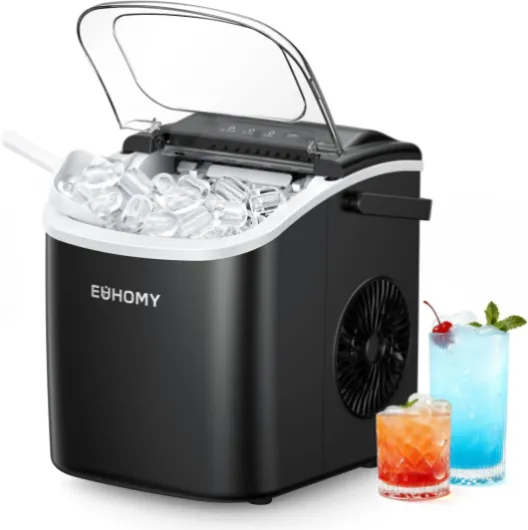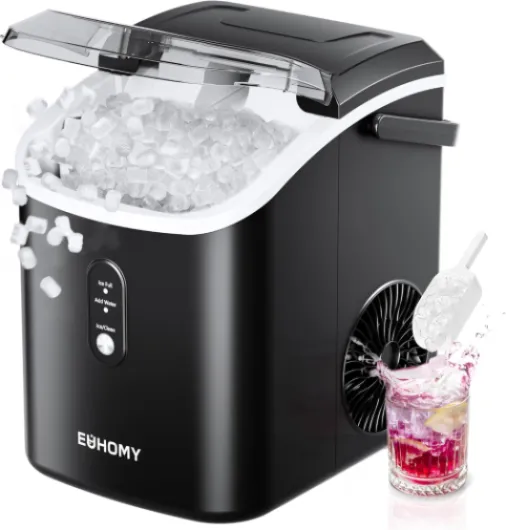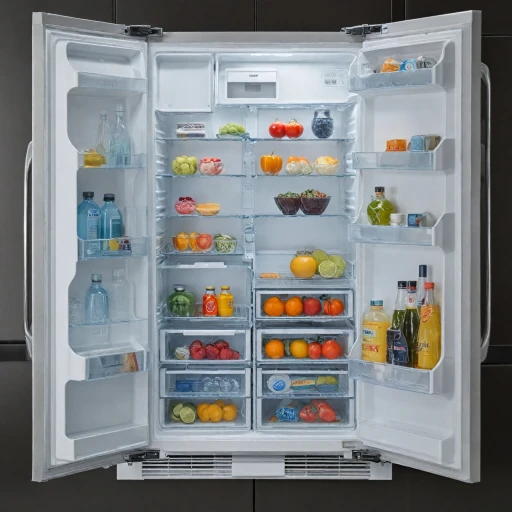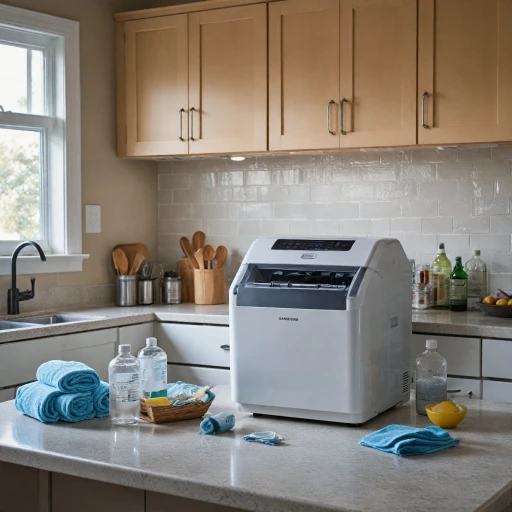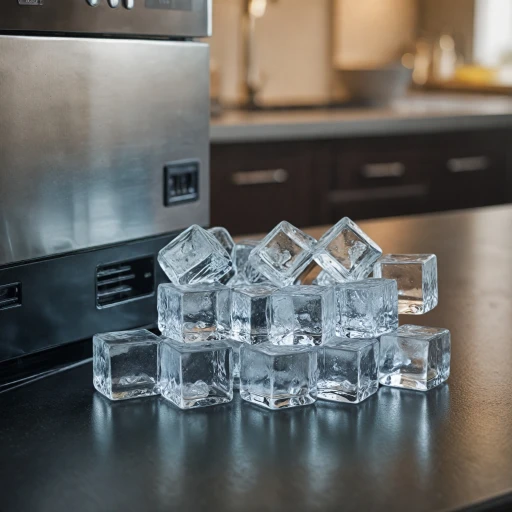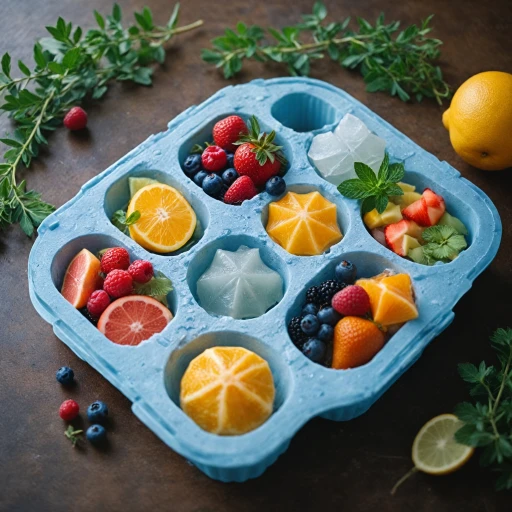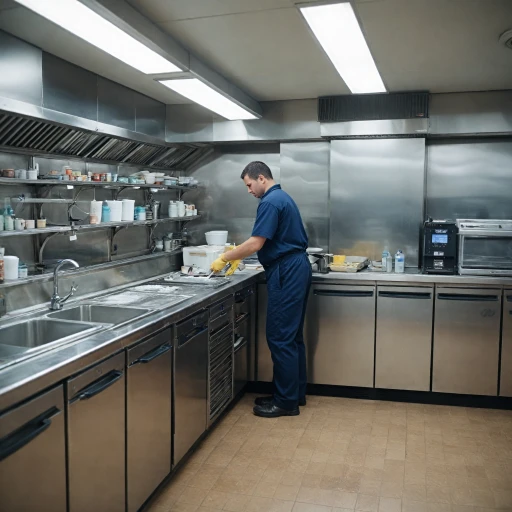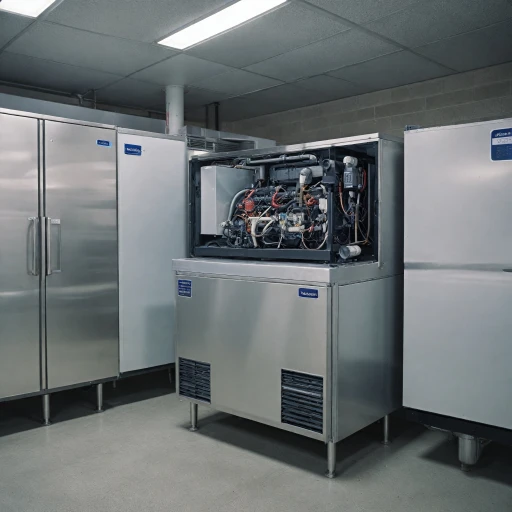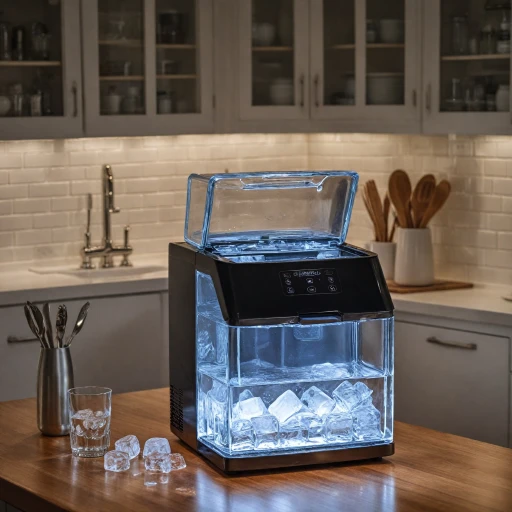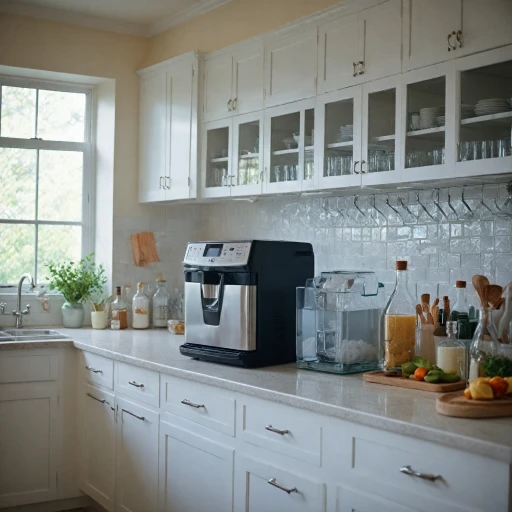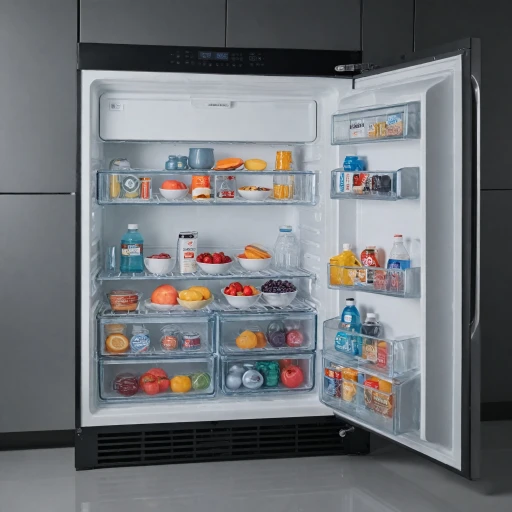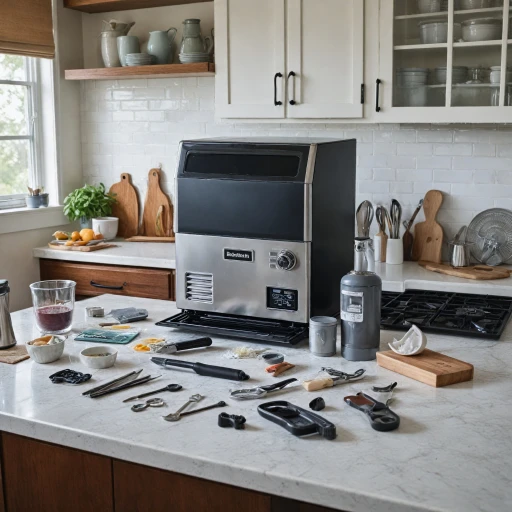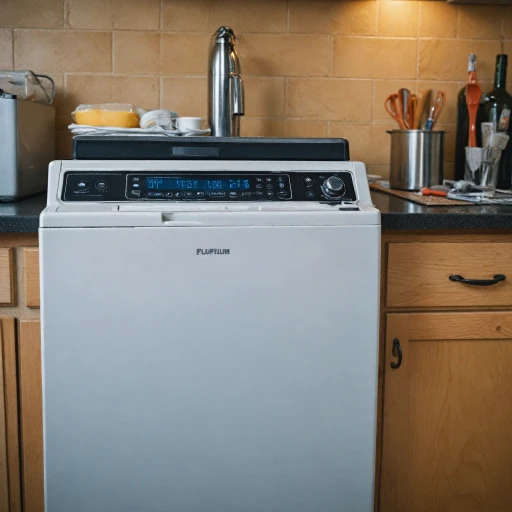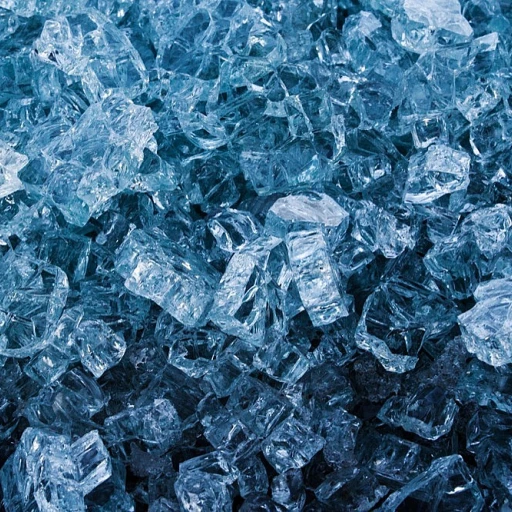
Understanding the Science Behind Clear Ice
The Science of Crystal-Clear Ice
Creating crystal-clear ice is a fascinating process that hinges on controlling variables like temperature, air, and impurities. The hallmark of impeccable ice cubes lies in minimizing air bubbles and impurities, ensuring they are flawlessly transparent and ideal for that perfectly chilled cocktail.
When making clear ice, the type of water you use is crucial. Common sources like tap water often result in cloudy ice due to the presence of minerals and air trapped within as it freezes. Opting for filtered or distilled water can significantly enhance transparency by reducing these elements.
The freezing process is another critical factor. Traditional freezing allows ice to harden from the outside in, trapping air and impurities within, leading to cloudy, rather than clear, ice cubes. Techniques like directional freezing — where ice freezes from one direction — help expel air and impurities for a clearer result.
One could even use a cooler method, allowing the ice to freeze from top down in a controlled environment, or experiment with boiled water. Boiling helps to remove some air content, thus reducing the cloudy appearance when ice forms.
Understanding these scientific principles will guide you as you seek to produce that pristine, crystal clear ice for your beverages. Additionally, if you're curious about how long your ice can last and which methods of storing it are most effective, you may want to explore understanding the duration of dry ice in a freezer.
Choosing the Right Ice Maker for Clear Ice
Factors to Consider When Choosing an Ice Maker
When it comes to crafting clear ice cubes, selecting the right ice maker is crucial for eliminating cloudy ice. The key lies in the process of removing impurities and air bubbles that cloud your cubes. Here's what you need to consider:- Water Quality: Always use filtered water, distilled water, or boiled water to fill your ice maker. Tap water often contains impurities that can affect the clarity of your ice blocks.
- Freezing Technique: Look for ice makers that utilize directional freezing. This process freezes water from one direction, pushing air bubbles and impurities to the bottom, resulting in a crystal-clear top surface.
- Design and Features: Some makers come equipped with trays designed for making clear ice. An ice tray with a cube mold can contribute significantly to achieving those perfect crystals. Choose trays that facilitate even freezing.
- Size and Capacity: Consider your needs. Whether preparing cocktails or storing block ice at home, the ice maker's capacity should align with your intended use.
- Cooling System: A cooler freezing system not only creates clear ice but helps in energy efficiency. Keep an eye out for advanced cooling technologies when shopping for an ice maker.
Step-by-Step Guide to Making Clear Ice at Home
Mastering the Art of Creating Crystal-Clear Cubes
Creating clear ice is both an art and a science, requiring careful attention to the process. Follow these steps to craft pristine cubes at home:- Start with Quality Water
- Opt for filtered, distilled, or boiled water to minimize impurities. These methods help remove minerals and gases that can cause cloudy ice.
- Although some prefer to use tap water, it's essential to boil it first; boiled water releases air bubbles, contributing to clearer ice.
- Directional Freezing Method
- Place a cooler or tray inside the freezer and fill it with water. Ensure that the top remains open, allowing impurities to move away from the freezing zone.
- As ice forms from the top downwards, it naturally pushes impurities to the bottom. This process, known as directional freezing, results in crystal clear ice at the top.
- Using a Cube Tray
- Choose silicone cube trays as they allow for easy removal without breaking the delicate ice.
- Once frozen, remove the block ice from the cooler and carve out the clear ice for use. This can be done using a non-metal tool to avoid introducing cracks.
- Monitoring the Freezing Process
- Regularly check your water as it freezes. Ensure that the freezer's temperature is set to an optimal level to avoid freezing too quickly, which can lead to trapped air bubbles.
Common Challenges and How to Overcome Them
Tackling the Challenges of Making Clear Ice
Making clear ice at home can be rewarding but often comes with its own set of hurdles. Understanding these common challenges and how to overcome them will enhance your ice-making experience, ensuring those crystal-clear cubes are a reality.- Cloudiness in Ice Cubes: One of the leading causes of cloudy ice is air bubbles getting trapped during the freezing process. To combat this, consider using the directional freezing technique. Fill the ice cube tray with boiled or filtered water to minimize impurities, and slowly freeze in a cooler to guide air out before the water solidifies.
- Imperfectly Formed Ice: If the cubes are not forming properly, check the water quality. Distilled or filtered water often yields better clarity than tap water when making clear ice. Ensure that your ice maker or ice tray is filled to the right level, as overfilling can also affect the freezing process.
- Dealing with Air Bubbles: When air is intentionally introduced, such as in carbonated beverages, bubbles are inevitable. However, for the clearest ice cubes, minimize disturbances while the water is freezing, and try using boiled water after it's cooled slightly, which often contains fewer dissolved gases.
- Block Ice Not Forming Fully: If you're attempting to create an ice block and it's not forming completely, evaluate your freezer settings. Block ice often requires a more uniform temperature. Use a thermometer to ensure the freezer is maintaining a consistent cold spot for the block.
- Impurities Affecting Clarity: Impurities result from both water quality and contaminants in the freezer. Regular maintenance of your ice maker will help maintain not just clear cubes but also hygienic conditions. Refer to effective cleaning tips to keep your equipment in top condition.
Maintenance Tips for Your Ice Maker
Ensuring Your Ice Maker Runs Smoothly
Maintaining your ice maker is essential for producing clear ice cubes free of impurities and bubbles. Proper maintenance not only enhances the quality of your ice but also extends the lifespan of your appliance. Here are some key tips to keep your ice maker in prime condition:- Regular Cleaning: Clean your ice maker regularly to prevent buildup of minerals and impurities. Use a mixture of warm water and mild dish soap to wipe down the interior and exterior surfaces. For deeper cleaning, use a solution of vinegar or lemon juice to tackle limescale or mineral deposits. Rinse thoroughly to ensure the removal of cleaning residues that may cause cloudy ice.
- Change the Water Filter: If your ice maker includes a water filter, replace it according to the manufacturer's instructions. Using filtered or distilled water reduces the presence of impurities, resulting in clearer ice cubes. If your ice still appears cloudy, consider upgrading your filter to a higher-grade option that can further eliminate impurities.
- Inspect the Water Lines: Regularly check the water lines for kinks or blockages that might restrict water flow. Slow or uneven water distribution can lead to irregular freezing patterns, affecting the clarity of the ice. If persistent issues arise, check the instructional materials or guides that came with your ice maker for troubleshooting steps.
- Monitor Temperature Settings: Ensure that your freezer or ice maker is set to the optimal freezing temperature. A temperature that's too low can cause rapid freezing, trapping air bubbles within the cubes, instead of achieving crystal clear results. Aim for a gradual freezing process using methods like directional freezing as outlined in creating clear ice.
- Handle With Care: Exercise caution when removing ice blocks or cubes from trays and the ice maker to prevent damaging or cracking components. Always follow safe handling practices to keep the machine's mechanical parts in good working order.
Innovative Uses for Clear Ice
Elevating Your Drinks with Crystal Clear Ice
The allure of crystal clear ice lies in its aesthetic and functional benefits. When making clear ice, the absence of air bubbles and impurities ensures that your ice cubes maintain their integrity longer, enhancing both the look and taste of beverages. Here are some innovative uses for clear ice:- Signature Cocktails: Impress your guests by serving cocktails with crystal clear cubes. The transparency of the ice highlights the vivid colors and garnishes in the drink, making for a visually appealing presentation.
- Special Occasions: For events or celebrations, using clear ice blocks can elevate the sophistication of punch bowls or larger drink dispensers. They keep the beverages colder for longer without diluting the flavors quickly.
- Home Bars: Upgrade your home bar aesthetics and functionality by incorporating distinctive cube trays that produce perfectly clear cubes. They add a professional touch to any drink.
- Culinary Creations: Chefs can use blocks of clear ice as a base or garnish for dishes, creating intriguing presentations that keep food chilled without interference from cloudy ice.
-logo-retina.jpg)

